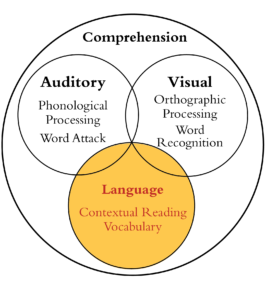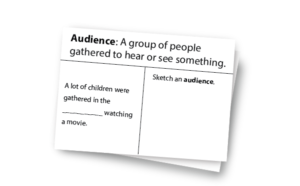How to Apply Concept Imagery to Increase Vocabulary
Share
“It is impossible even to think without a mental picture.” - Aristotle

In the field of reading, educators work with struggling students to develop phonemic awareness, sight words, and fluency. Many students have success in increasing their decoding skills, yet they may still struggle with background knowledge, vocabulary, and reading comprehension. They often continue to struggle on state achievement tests. Many are also English learners with limited vocabulary terms, struggling to learn a new language while also trying to meet rigorous standards.
We know that vocabulary is one of the five major components of effective reading instruction, and also a critical factor in comprehension. However, many strategies to introduce or practice vocabulary skills lack a specific methodology based on how our brain processes words and meaning. In our instructional practice, when we looked at vocabulary development, the questions for us were numerous. How do we store meanings of words in our brains? What is the cognitive function(s) we use? How can we stimulate vocabulary effectively and efficiently, and speed up the acquisition of it?
Ask yourself what works in your brain when you think of a concrete word. Try the word “recital.” What happened in your brain? Try an easier word like “horse.” Now try “cat.” How about “tiger?” Do you notice that you image – visualize? For “recital,” did you see a girl playing a piano or an adult playing the cello?
Five Tips for Increasing Vocabulary
Through Concept Imagery – the ability to create a mental representation from language – explicit and systematic instruction can increase vocabulary for all learners. Here are five tips on how to apply or stimulate imagery as a foundation for vocabulary development:- Visualize and verbalize the word in a sentence – Along with the definition of the word, create a few sentences with the word in multiple contexts.

Sentences should be high in imagery. Question the student to what they visualize for the sentence. They should be able to verbalize the relevant details. (Note: This process is explicitly developed through the Visualizing and Verbalizing program, and may need to be done intensively for some students before they can apply concept imagery to vocabulary development).
2. Student creates their own sentence – The student verbalizes his own sentence and, if possible, writes the sentence. The goal is for his sentence to be (1) personal, using the word in a context familiar to him, (2) descriptive by comparison, and (3) humorous or vivid or exaggerated. Help students avoid sentences that do not include imagery to support the definition, such as “The tree was immense.” Instead, this sentence could read “The immense redwood tree was as large as the tall skyscraper.”

3. Create vocabulary cards – For additional practice, or for challenge words, create a 3x5 card with the word on one side and the definition and personal sentence, with a blank for the word, on the other side. The blank allows students to hypothesize, and visualize from context, the word being learned. Thus, they can practice from both sides of the card. As an extra strategy, have the student draw a simple picture of the sentence on the card, incorporating the details he has previously verbalized.
4. Use the word in conversation – Encourage the student to use the word in conversation. You can create a Challenge game between two students. Choose five words for the week (or day), then each student tries to use a word during a conversation with his partner. They can create a nonverbal signal, like holding up the number of fingers for each word used, or track their points in a Vocabulary log.
5. Practice the word in context – Select texts where the student can experience their new words in context. Have students highlight the words as they experience them during the story.

What words to choose? You can choose your own based on your students’ age and ability level, as well as the content and curriculum you are teaching. The Vanilla Vocabulary series is also a great supplemental resource with over 1,800 high frequency words, grades 1- 6. The Gunny and Ivan Adventure companion readers included in this series are ideal for practicing these words in context.